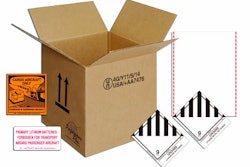
As companies operate more globally, what was traditionally a highly technical support role has evolved into a main component of product development in which packaging professionals are asked to take on more leadership roles and related challenges. This requires skills beyond the technical ones traditionally required of many packaging professionals. As these skills aren’t taught extensively at packaging or engineering schools, making the shift from technical expert to project leader is a big challenge for many, and it requires focus in both content and style. Here are a few key areas that can build success.
1. Understanding the wider context and clear briefs
Before considering materials, dimensions, tolerances, specifications, etc., it is crucial to first understand what exactly the business is requiring. Why does this project need to exist? Having a solid understanding of how the project fits within the overall business strategy will give perspective on its relevance and priority, and will start to define potential directions or solutions.
Another area to clearly define is the financial context of project deliverables. Having clearly defined financial goals and boundaries will help the team focus on realistic packaging options. As costs consist of materials (both product and packaging), supply chain (manufacturing and logistics), and overhead, understanding the full view of what makes up the product cost can help define these boundaries and options. After all, a potential cost increase in one area may be required, but can be offset from another area. The main point is the more business context and understanding a project leader has, the more effective the project focus will be.
2. Teams and resources
With the project brief comes the need to identify key functions to be engaged and committed, to deliver against the goals. Packaging as a function has a unique perspective in that it has access to, and interacts with, key business functions. For most projects (and depending on company organization), the core of any project is marketing, R&D (which is typically where packaging resides), and supply chain. Any project leader must have a working relationship with these functions. In addition, depending on the project scope, the project leader will need to interface with those in finance, consumer research, customer management, science engineering functions (aka product R&D), factory operations, procurement, etc.
To be an effective team leader, a project leader must:
• Have a basic understanding of what these functions do and how they relate to each other.
• Understand the agendas, priorities, goals and pressures these functions have.
• Gain commitment and resources from these functions and clarify roles and responsibilities.
• Converge and set clear goals, ensuring reasons are clear and understood for all involved.
Each function will have individual targets and objectives that influence a project in different ways. Supply chain, for example, may prioritize cost optimization, whereas marketing may want to expand the portfolio of SKUs. At times, objectives can be in conflict among functions. An effective project leader has to understand these conflicts and negotiate effective compromises against the project goals, to gain full commitment from all segments of the team. Having an adaptive style will help to land agreements. The main point is that the project leader’s views, recommendations and decisions are heard and understood.
Team alignment and commitment also requires stakeholder engagement, endorsement, and commitment. Stakeholders, in this sense, are generally company leaders who control the resources (people, budget, etc.). Early engagement and alignment on a project with key stakeholders will help to identify conflicting areas and bring earlier resolution prior to committing the project to move forward.
3. Delivering as a leader
In executing a project, an effective “backbone” of team organization is the project network. Understanding the various functions mentioned earlier allows the team to interlink activities and even negotiate the need for certain tasks or time to complete. Coupled directly with this is effective and continuous risk management. As trade-offs and decisions are made, risks need to be identified with clear valuation and contingencies planned.
All of this clarifies the purpose for the team. The leader’s role is then to delegate to, empower, and trust team members to deliver against what has been agreed on, holding them accountable. At this point, the project leader’s main role is to resolve issues and remove obstacles, while keeping the team focused and aligned by using adaptive styles.
























